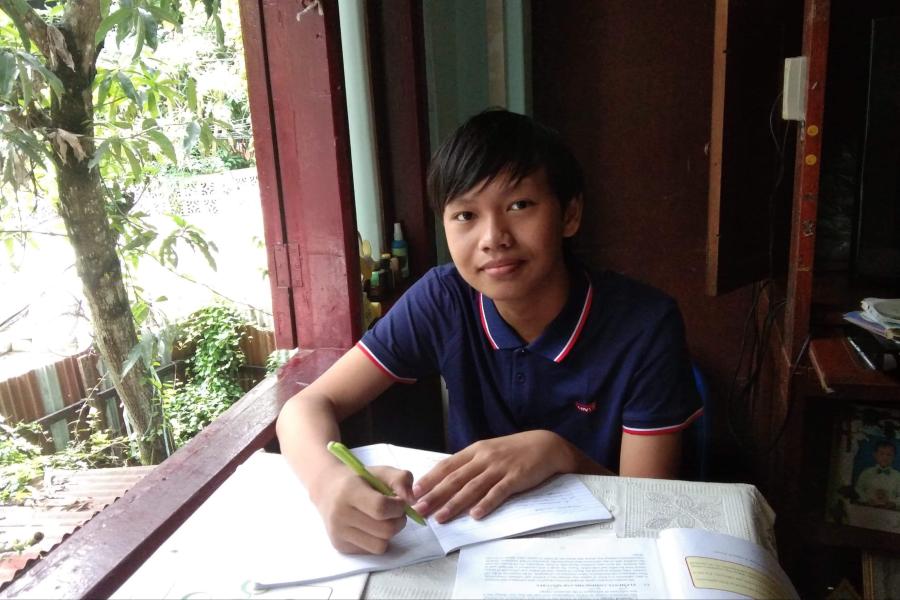Responding to the education crisis

UNESCO is working with other UN agencies and the Myanmar Ministry of Education to ensure continued learning for all children.
Like most governments around the world, Myanmar has temporarily closed schools, universities and teacher education colleges to contain the spread of the COVID-19 pandemic.
These nationwide closures are impacting millions of students.
UNICEF, the UN Children’s agency, says “Children are the hidden victims of this pandemic.”
In addition to the risk of contracting the virus, social distancing measures are disrupting daily routines, threatening children’s ability to play and learn and placing additional stress on parents.
The United Nations in Myanmar has more than 20 agencies working on the COVID-19 response. They have come together as one to support every aspect of the Government’s plan to protect lives and support livelihoods.
UNESCO, the UN Education, Scientific and Cultural Organisation, like UNICEF, supports Myanmar to mitigate the immediate impact of school closures.
Back to School after COVID-19: Safe Reopening of Schools
Words and pictures by Anders Lee, UNESCO.
YANGON, Myanmar, September 22, 2020: As Thaw Lay got ready on his first day back at school, he knew that this school year would be unlike the previous years.
“I was excited, but I also knew that things would be a little different because school reopened later this year”, recalled Thaw Lay, a Grade 10 high school student from Insein Township, Yangon.
Like most students across the world, Thaw Lay has faced uncertainties brought about by COVID-19. The pandemic has caused unprecedented levels of disruption to education, affecting over 90% or more than 1.5 billion of the world’s student population.
In Myanmar, schools have experienced extended closures since the nationwide school closure in March. Like many countries, Myanmar’s education system has to adapt quickly to the rapidly changing situation due to COVID-19.
To address this, the Ministry of Education, with the support of UNESCO, has developed a sector-wide COVID-19 Response and Recovery Plan, to ensure the continuity of education in Myanmar during and after the pandemic, to prepare for the safe reopening of schools, and to strengthen the overall preparedness of the education system for future emergencies.
Following a slowdown in new local transmission of COVID-19, the Ministry of Education announced a phased reopening of Basic Education schools, starting with high schools on 21 July. In preparation of the reopening, additional protocols and safety measures were put in place to ensure the safety of students, teachers and all staff members. Free face masks and shields were distributed to every student and teacher, with approximately 75,000 thermometers provided to schools across Myanmar. Additional hand washing stations have also been installed in schools.
For Thaw Lay, the guidelines were simple to follow, making him feel safe on the first day of school reopening. First, students would line up to wash their hands before entering the school compound. Teachers would then take the body temperature of students. Students who have higher body temperatures would either be sent home or taken to the doctor.
“I felt safe at school. There weren’t as many students on the first day, but it felt just like a normal day so I had nothing to worry about.”
Schools have been inspected by the Ministry of Education before the reopening, in accordance with preventive measures based on guidelines provided by the Ministry of Health and Sports, with a checklist to classify high schools under different grades – only schools that have achieved the highest grade would be allowed to reopen.
For schools that have reopened, additional measures including double or triple shifts, and alternate days of schooling, have been introduced to ensure that physical distancing is observed in classrooms. Adaptations have been made to the curriculum to minimize the impact of the pandemic on students’ progression to the next level at the end of this academic year. On days where students do not need to go to school, home-based learning ensures that students remain engaged in continued learning.
“School assignments so far have been normal. For home-based learning, I continue learning my lessons through self-study. There are also assignments given by our teachers to finish while we study at home.”

With the surge in local transmission cases amid the second wave of the outbreak, the recently-reopened high schools have swiftly been ordered to close again at the end of August.
The COVID-19 Response and Recovery Plan, as a living document, will undergo an iterative planning and operationalization process.
The Ministry of Education, together with the support of UNESCO, will continue to make adaptations to the framework based on the needs of learners, to ensure that when schools reopen again, students like Thaw Lay would be able to return to a safe learning environment in their schools, and that lessons learned are drawn from this pandemic to strengthen the resilience of the education system for future crises.
If you liked this story you’ll probably like this:
https://myanmar.un.org/en/52446-new-challenges-times-covid-19-bring-surprising-examples-cooperation
For more information about UNESCO’s global support for Education: https://en.unesco.org/covid19/educationresponse/support
For more information about UNICEF”s support for Education in Myanmar: https://www.unicef.org/myanmar/




